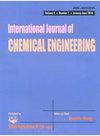sono - electro -过硫酸盐法去除水中阿替洛尔:基于ANFIS模型和遗传算法的预测与优化
IF 2.4
4区 工程技术
Q3 ENGINEERING, CHEMICAL
引用次数: 2
摘要
阿替洛尔(ATN)是一种广泛用于治疗某些心脏病的药物,由于它在人体内不能完全分解,所以在地表水中发现了一定量的阿替洛尔。这些数量可能会给环境和人类带来风险,因此,必须将其清除。本研究采用超声-电-过硫酸盐联合法去除ATN。在响应面法(RSM)实验设计的基础上,研究了5个主要因素(pH、时间、PS浓度、电流强度和初始ATN浓度)在5个水平上的影响。在不同条件下通过测试步骤后,用高效液相色谱法测定ATN的残留量。最后,采用99.63%准确率的自适应神经模糊推理系统(ANFIS)和遗传算法(GA)对数据进行分析和解释,并预测最优条件。实验结果表明,在Ph为7.4、时间为18 min、PS浓度为2000 mg/L、电流强度为3.35 a、ATN初始浓度为11.2 mg/L的条件下,处理效率可达99.8%。根据得到的结果,可以认为ATN的初始浓度是这一过程中最有效的因素,本实验的最佳Ph范围为中性范围。过硫酸盐声电法是去除水源中ATN的一种有效的新方法。本文章由计算机程序翻译,如有差异,请以英文原文为准。
Using Sono-Electro-Persulfate Process for Atenolol Removal from Aqueous Solutions: Prediction and Optimization with the ANFIS Model and Genetic Algorithm
Atenolol (ATN) is a drug that is widely used to treat some heart diseases, and since it cannot be completely decomposed in the human body, some amounts of it are found in surface water. These amounts may bring risks to the environment and humans, and for this reason, its removal is a must. In the present study, the combined sono-electro-persulfate method was used for ATN removal. Based on the design of the experiment conducted by response surface methodology (RSM), the effects of 5 main factors (pH, time, PS concentration, current intensity, and initial ATN concentration) have been investigated at 5 levels. After passing the test steps in different conditions, the remaining amount of ATN has been measured by high-performance liquid chromatography (HPLC). Finally, an adaptive neuro-fuzzy inference system (ANFIS) with 99.63% accuracy and a genetic algorithm (GA) were used to analyze and interpret data and predict optimal conditions. The obtained results indicate the possibility of a maximum efficiency of 99.8% in the mentioned conditions (Ph of 7.4, time of 18 min, PS concentration of 2000 mg/L, current intensity of 3.35 A, and initial ATN concentration of 11.2 mg/L). According to the obtained results, the initial concentration of ATN can be considered as the most effective factor in this process, and the best Ph range for this experiment was the neutral range. The sono-electro persulfate process can be mentioned as a new and effective method for removing ATN from water sources.
求助全文
通过发布文献求助,成功后即可免费获取论文全文。
去求助
来源期刊

International Journal of Chemical Engineering
Chemical Engineering-General Chemical Engineering
CiteScore
4.00
自引率
3.70%
发文量
95
审稿时长
14 weeks
期刊介绍:
International Journal of Chemical Engineering publishes papers on technologies for the production, processing, transportation, and use of chemicals on a large scale. Studies typically relate to processes within chemical and energy industries, especially for production of food, pharmaceuticals, fuels, and chemical feedstocks. Topics of investigation cover plant design and operation, process design and analysis, control and reaction engineering, as well as hazard mitigation and safety measures.
As well as original research, International Journal of Chemical Engineering also publishes focused review articles that examine the state of the art, identify emerging trends, and suggest future directions for developing fields.
 求助内容:
求助内容: 应助结果提醒方式:
应助结果提醒方式:


